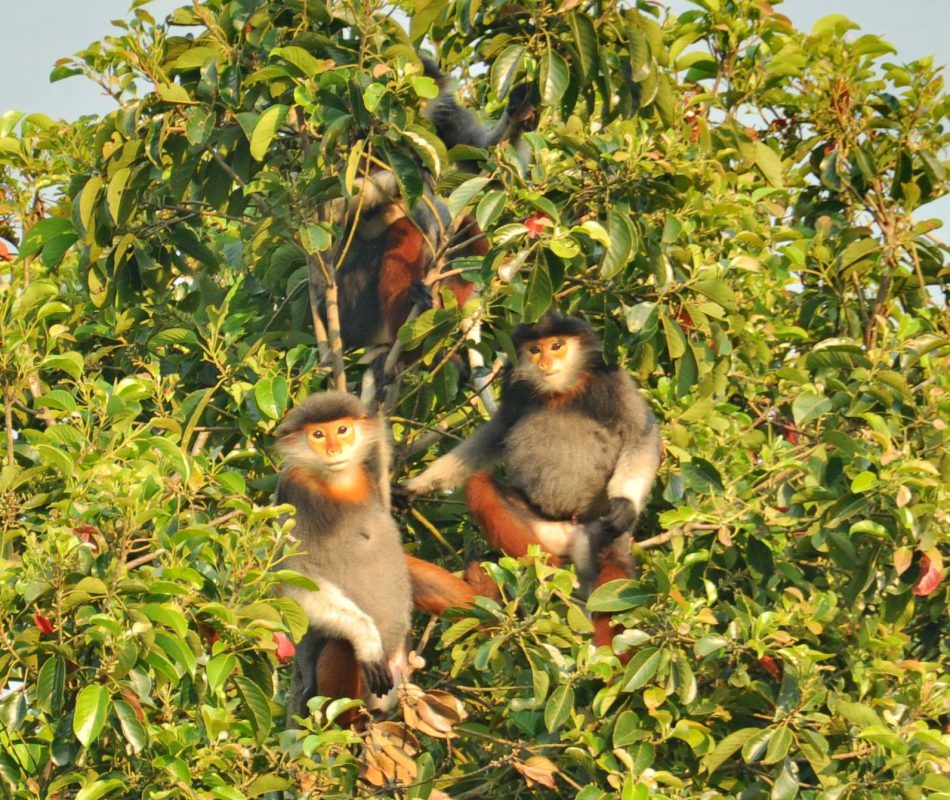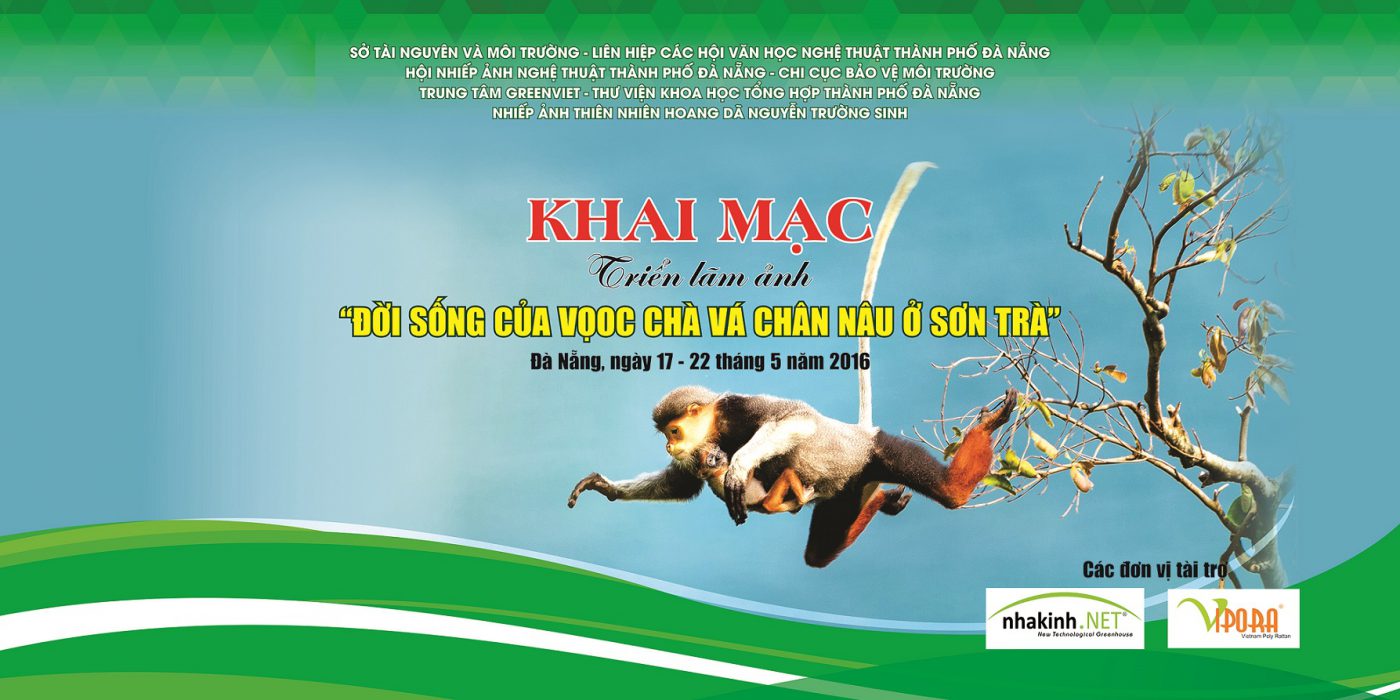RED SHANKED DOUC LANGURS – THE TREASURE OF DA NANG
An exhibition of the red-shanked douc langur was organized by Da Nang Han River Photo Club in cooperation with GreenViet. The event’s donors were Furama Resort, Olalani Resort, Da Nang Tourism Association and WWF.

At 15h, January 10th, 2017, “The treasure of Da Nang” – a photo exhibition of red-shanked douc langurs in Son Tra peninsula began. From 2015 to 2016, there were 4 major exhibitions aiming to raise public awareness of people about the douc species which is considered as “the queen of all primates” taken place in Da Nang, organized by photographers from Da Nang and Ho Chi Minh city. The previous exhibitions always attracted thousands of tourists and locals to visit and study about this rare primate species. In fact, the recent exhibition was the biggest one in terms of quantity, quality as well as participants. A total of 120 photos taken by 30 professional and amateur photographers were exhibited. There have been more and more photographers interested in the beauty of the douc and Son Tra wildlife. Son Tra douc has been gradually and naturally becoming familiar to local people.
Mr. Huynh Anh, the chief organizer of this exhibition and president of Da Nang Han River Photo Club said that “Taking such vivid and edgy photos of red-shanked douc langurs in Son Tra is not an easy task. Every day, photographers had to ride to the mountain top before sunrise and only leave after sunset. In spite of harsh weather, they spent most of their time, effort and even money to possibly capture the best moments. They wish that each photo here is able to carry a clear and artistic message of the importance of conserving this rare species to decision-makers.”

The red-shanked douc langur is endemic to the Indochina region, including Laos and Viet Nam, and possibly in Cambodia. This primate species is known as “costumed apes” because of its magnificent colors and considered as the queen of the primate world. According to Viet Nam’s Red Data Book (2007), the species is classified as Endangered (EN). According to The Viet Nam Government Decree 32/2006/ND-CP on the management of endangered, precious, and rare species of wild plants and animals, it is classified into Group IB – process and trade are prohibited. It is also listed as a high priority in conservation according to the 160/2014 Decree. However, its population is declining at an alarming rate because of illegal hunting, deforestation, and habitat fragmentation.
In this event, there was Dr. Ha Thang Long who is Chairman of Frankfurt Zoology Society in Viet Nam, co-founder of GreenViet, and also a top expert in primate conservation in Viet Nam with more than 20 years working in the field of wildlife research and conservation. Dr. Long indicated: “The recent conference about primate conservation announced that there are only approximately 3000 individuals of the red-shanked douc langur in the world. Remarkably, this species is endemic to the Indochina region which has been only recorded in Laos and Viet Nam, possibly in Cambodia. Da Nang is blessed with a precious treasure which is Son Tra Peninsula with over 4000 ha of natural forest and about 300 individuals of red-shanked douc langurs and hundreds of species of other animals and plants. 300 red-shanked langurs: such amount is very meaningful to conservation work as well as the status of this species all over the world. Taking Phong Nha – Ke Bang National Park as an example: This place is well-known for its diversity and variety of primates and the possibly the largest population of doucs, however, it takes several months to be able to observe few individuals. Therefore, I would like to emphasize the magnificence of Son Tra which is depicted through hundreds of photos displayed here today.”

Currently, however, the life of the red-shanked douc langur has been critically threatened because of habitat fragmentation, environmentally unfriendly tourism as well as uncontrolled deforestation. Aiming to maximize potential benefits from Son Tra peninsula, the city government has initiated planning, promoting tourism, building new facilities, and investing in river and sea encroaching projects, etc. Such activities possibly have effects on changing the ecological landscape, destroying animals’ habitat, increasing the invasion of exotic species, promoting environmental pollution and climate change, and the overexploitation of natural resources.



This exhibition is an opportunity for local people as well as the city government to be aware of and appreciate their own precious treasure. It is necessary for the local authority to respect local people’s opinions and make proper decisions to save this primate species. Hopefully, this kind of exhibition will be widely and frequently shown in universities and schools so that all students have a chance to sense the beauty of this precious species. Ending his speech in the opening ceremony, Dr. Long emphasized that together with the community, GreenViet and other wildlife conservation organizations will endlessly save this species with the greatest effort; not only for the sake of ourselves but for that of future generations as well.
Source: Bui Van Tuan/GreenViet.





